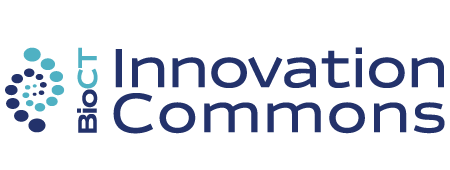Region gets $50,000 Innovation Places grant
New London — Thames River Innovation Place, a local effort to jump start a more vibrant economic climate in southeastern Connecticut, has won the maximum $50,000 grant from the innovation-boosting agency CTNext to develop a strategic plan to attract entrepreneurs and talent to the region.
Thames River, which includes Groton and New London, was one of 12 regions in the state to receive initial grants intended to offset costs for planning initiatives to attract growing businesses to the area. The local effort received a full $50,000 grant from CTNext, a division of Connecticut Innovations, while some other smaller communities, such as Middletown, received substantially less.
“It’s validating,” said Hannah Gant, a leader in the Thames River Innovation Place initiative and one of the main drivers behind Spark Makerspace, a cooperative in New London that allows individuals and businesses to share expertise, space and equipment. “I feel the state is getting it right on this.”
Gant and Susan Froshauer, chief executive of Connecticut United for Research Excellence and founder of the CURE Innovation Commons business incubator, were co-leaders in the region’s Innovation Places effort. Gant said they have raised an additional $30,000 in local funds to hire the Santa Fe-based Regenesis Group at something under $75,000 to lead “Story of Place” brainstorming sessions in an attempt to identify and build on the region’s major assets.
“Everyone should feel really good about it,” Gant said in an interview Tuesday at the Washington Street Coffeehouse. “Southeastern Connecticut sometimes has a little bit of a chip on its shoulder for being ignored by Hartford.”
“This is, of course, fantastic news and we will support the effort of this group to develop a strong, solid strategic plan and application,” Sean Nugent, interim director of the regional economic development agency seCTer, said in a statement.
The next step, said Gant, is to develop a strategic plan and then apply for the next round of funding from CTNext, with a minimum of $250,000 available to each chosen Innovation Place. Only about five or six regions are expected to win an initial Innovation Places designation, with up to 10 possibly receiving some amount over the next five years.
“These grants intend to support community efforts to build out a plan that will highlight the strengths of each community, assess the needs of entrepreneurs and talent, and create an action plan that will be submitted for additional grant funding through the Innovation Places program,” Glendowlyn Thames, interim executive director of CTNext, said in a statement.
Gant said the best part about the program is that it is not prescriptive — each region is allowed to identify in its own way forward rather than being told precisely what is expected.
The Thames River effort has started by reaching out to a wide variety of entities, she added, including Pfizer Inc., Electric Boat, Connecticut College, Mitchell College, the University of Connecticut at Avery Point, the New London school system, the Southeastern Connecticut Enterprise Region and the cities of New London and Groton.
“They want to see something that’s deeply collaborative,” Gant said of the state.
The questions, she added, are “What needs to happen here that will vastly improve this place across all these different dimensions?” and “What would really improve this place in the long term?”
Gant said it’s not all about high-growth companies or talent; the state also is looking at how regions can add value by doing things in new ways, such as New London Schools Superintendent Manuel J. Rivera’s efforts to create a culture of excellence. Coordinating some of these efforts can add vibrancy to an area as well, she said, as can removing old structural barriers.
She noted that Thames River Innovation Place will be holding a hackathon Nov. 11-13 at Spark that will allow computer programmers and others to collaborate on ways to improve mobility at the mouth of the river.
“We want to get people excited, engaged and involved,” Gant said.
Locals identified the Thames River as the fulcrum for its Innovation Place designation, recognizing the waterway’s importance in commerce, leisure activity and tourism — key drivers of the economy.

